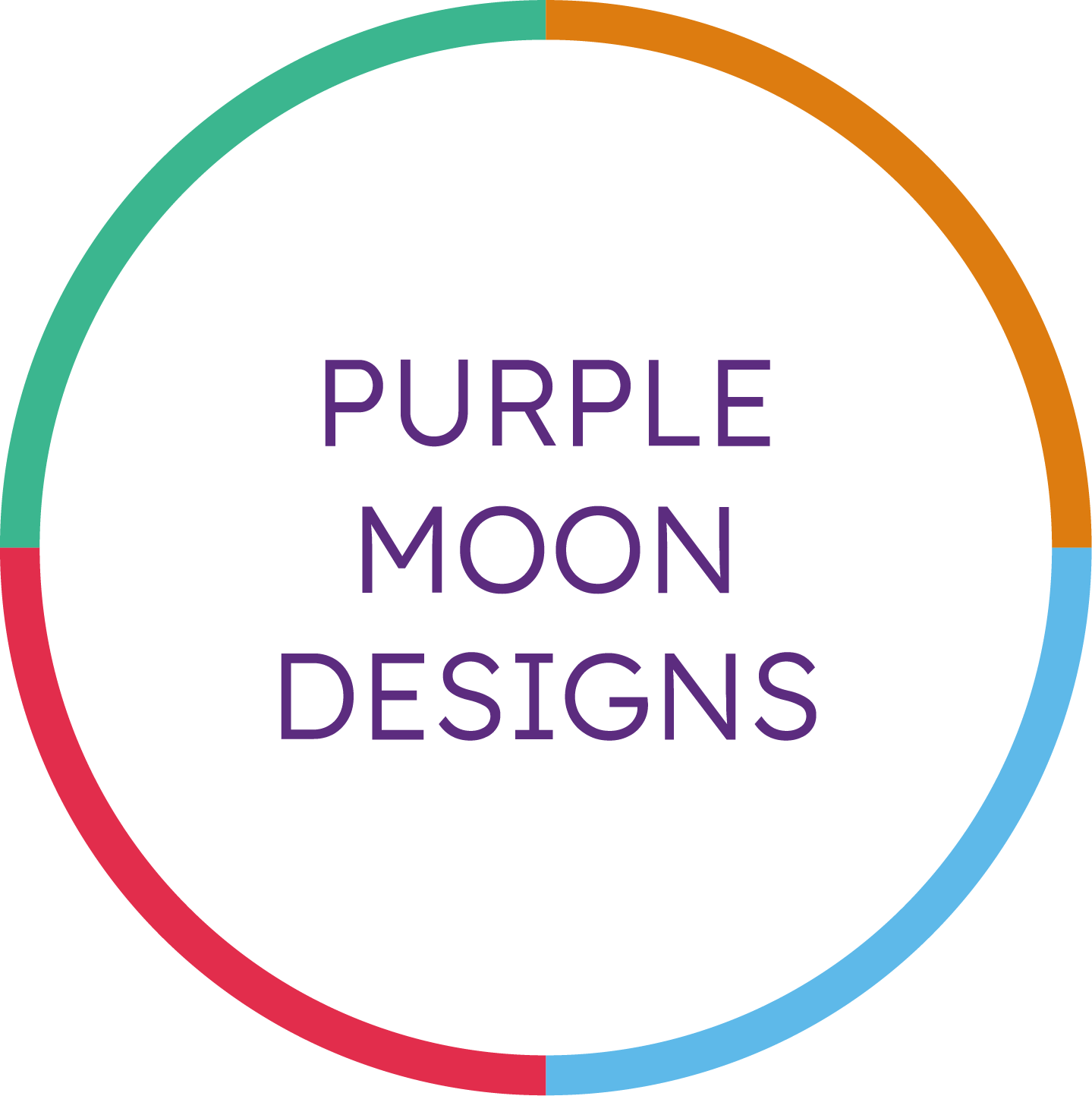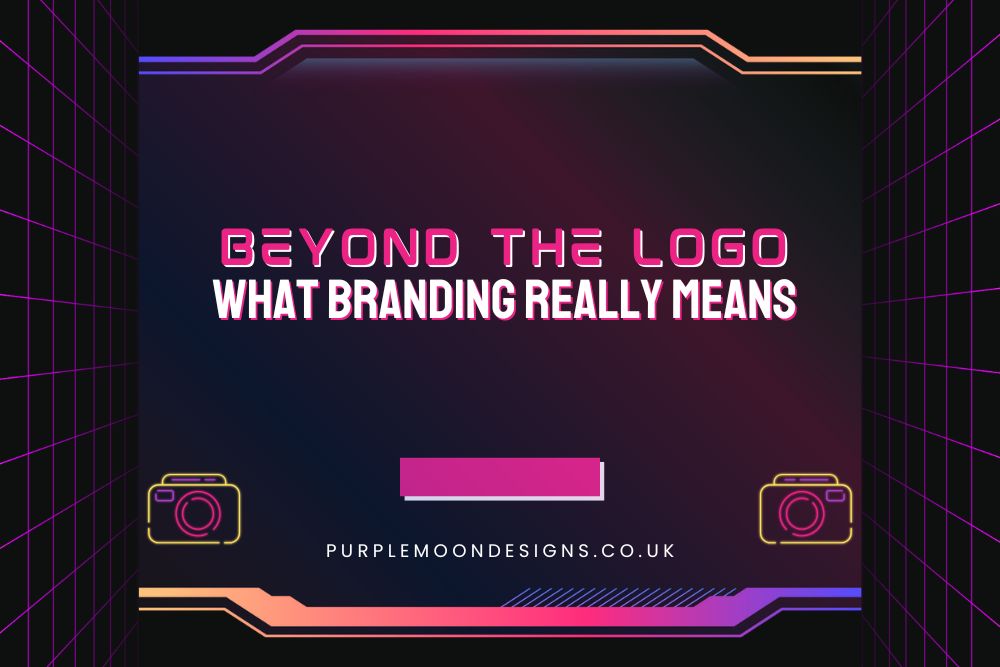Colours profoundly impact how we perceive and interact with the world around us. In brand branding, they can evoke emotions, influence decisions, and shape how consumers perceive a brand. At Purple Moon Designs, your trusted Branding and Website Design Company in Glasgow, we explore the psychology of colours and their role in creating memorable brand identities.
What is Colour Psychology?
Colour psychology studies how colours influence perceptions and behaviours. Branding and marketing examine how colours shape consumers’ impressions of a brand and influence purchasing decisions. A well-defined brand strategy ensures that color choices align with the brand’s overall guidelines and objectives, enhancing brand consistency and equity.
Key Factors Influencing Color Perception
- Personal Experiences: Individual preferences and past experiences heavily influence colour perception.
- Cultural Context: Different cultures associate colours with distinct meanings.
- Industry Trends: The appropriateness of colours often depends on the brand’s industry and audience expectations.
Introducing brand values into the color selection process ensures that the chosen colors align with the company’s mission and overall branding strategy, appealing to modern consumers who prioritize transparency and ethics.
The Emotional and Psychological Effects of Different Colors
Colors play a significant role in branding, as they can evoke emotions and influence consumer behavior. Different colors can have distinct emotional and psychological effects on individuals, which can impact how they perceive a brand. Here’s a breakdown of the emotional and psychological effects of different colors:
- Red: Energy, passion, and excitement. Red can stimulate feelings of urgency and encourage impulse purchases. It’s often used in clearance sales and fast-food branding to grab attention and create a sense of urgency.
- Orange: Warmth, creativity, and playfulness. Orange can evoke feelings of excitement and enthusiasm, making it ideal for brands that want to convey a sense of fun and energy. Think of brands like Nickelodeon or Fanta, which use orange to appeal to a younger, more playful audience.
- Yellow: Happiness, optimism, and sunshine. Yellow can stimulate feelings of warmth and happiness, making it suitable for brands that want to convey a sense of friendliness and approachability. Brands like McDonald’s use yellow to create a welcoming and cheerful atmosphere.
- Green: Nature, growth, and harmony. Green can evoke feelings of calmness and balance, making it ideal for brands that want to convey a sense of eco-friendliness and sustainability. Companies like Whole Foods and Starbucks use green to emphasize their commitment to natural and sustainable practices.
- Blue: Trust, loyalty, and professionalism. Blue can stimulate feelings of trust and confidence, making it suitable for brands that want to convey a sense of reliability and expertise. Many financial institutions and tech companies, such as IBM and PayPal, use blue to build trust with their customers.
- Purple: Luxury, creativity, and wisdom. Purple can evoke feelings of sophistication and elegance, making it ideal for brands that want to convey a sense of high-end quality and exclusivity. Luxury brands like Cadbury and Hallmark use purple to create a sense of premium quality and creativity.
The Challenges of Applying Color Psychology to Brand Values
While assigning universal meanings to colours is tempting, the reality is more nuanced. For example:
- Green: Frequently connected to affluence, tranquilly, nature, and finance.
- Brown: Associated with toughness in one sense, yet cosiness and warmth in another.
This complexity means choosing the “right” colour isn’t about rigid rules but aligning colours with the brand’s personality and message. Additionally, it is crucial to consider the brand promise, as the chosen colours should reflect the brand’s commitments and guarantees to customers, thereby fostering brand loyalty.
Practical Tips for Using Colors in Brand Strategy
1. Ensure Colour Appropriateness
According to research, a color’s perceived suitability for a brand determines how effective it is. Ask yourself:
- Does this colour align with the product or service?
- Does it resonate with the target audience?
Incorporating clear brand guidelines helps maintain color consistency, ensuring that all brand interactions reflect the brand’s vision and voice.
2. Highlight Brand Personality
When it comes to conveying the personality of a brand, colours are crucial. For example:
- Blue: Often employed by IT and financial organizations, it conveys professionalism and trust.
- Red: Evokes energy and passion, ideal for brands aiming to stand out.
3. Appeal to Your Audience
Consider audience preferences when selecting colours:
- Gender Differences: Men often prefer bold shades, while women lean toward softer hues.
- Cultural Considerations: Color meanings vary across cultures; ensure your choices resonate globally or locally as needed.
4. Differentiate Your Brand
Colours can make a brand instantly recognizable. Leverage contrasting colours to stand out from competitors. For example:
- To make a lasting impact, use a vibrant accent colour over a plain background.
- Apply the “Isolation Effect” using a distinct colour to highlight key elements, such as call-to-action buttons.
5. Choose Unique Names for Colours
Colour names matter more than you think. Descriptive and unique names, such as “mocha” instead of “brown,” can enhance a product’s appeal and memorability.
Common Mistakes to Avoid When Using Colour in Branding
While colors can be a powerful tool in branding, there are common mistakes to avoid to ensure your brand image is effective and consistent. Here are some of the most common mistakes:
- Using too many colors: Overloading your brand with too many colors can create visual clutter and make it difficult for consumers to recognize and remember your brand. Stick to a cohesive color palette that reflects your brand’s identity and values.
- Not considering color psychology: Ignoring the emotional and psychological effects of different colors can lead to a brand image that is inconsistent with your brand’s values and message. Ensure that the colors you choose align with the emotions and perceptions you want to evoke in your audience.
- Not testing colors: Failing to test colors with different audiences and demographics can result in a brand image that does not resonate with your target audience. Conduct thorough testing to understand how different colors are perceived by various segments of your audience.
- Not considering color consistency: Inconsistent use of colors across different marketing materials and platforms can lead to a confusing and disjointed brand image. Maintain color consistency in all your branding efforts to create a cohesive and recognizable brand identity.
The Role of Contrast in Brand Management
A balanced colour scheme with contrasting hues can guide user behaviour and emphasize critical elements. Consider these principles:
- Base Colors: Establish a cohesive foundation.
- Accent Colors: Highlight actionable items or key messages.
- Contrast: To add visual appeal and clarity, use complementary colours.
A well-placed button with a contrasting colour can boost conversions. For instance, a red button on a predominantly green page stands out due to its high contrast, directing attention effectively. Additionally, organizing these visual elements in a brand kit ensures consistency and makes it easier to apply them across various marketing materials.
Building a Cohesive Brand Identity Palette
Selecting colours for your brand involves more than aesthetic appeal. A well-thought-out palette:
- Embodies the essential principles of your brand.
- Appeals to the people you want to reach.
- Makes you stand out from the competition.
Effective brand management is crucial for maintaining a cohesive brand identity, ensuring that both tangible elements like packaging and color palette, and intangible aspects related to audience perception, evolve over time to stay relevant.
At Purple Moon Designs, we help businesses craft visually compelling and strategically aligned brand identities. Our expertise as a leading Branding and Website Design Company in Glasgow ensures your brand’s colours resonate with your audience and stand the test of time.
The psychology of colours is a powerful tool in branding, offering insights into how consumers perceive and engage with brands. You can create a memorable and impactful identity by understanding your audience, aligning colours with your brand personality, and ensuring visual differentiation.
Partner with Purple Moon Designs, your trusted branding and website design company in Glasgow, to bring your vision to life with expert colour strategies and design solutions.
The Role of Colour in Creating Brand Recognition and Awareness
Color plays a significant role in creating brand recognition and awareness. Here are some ways color can contribute to brand recognition and awareness:
- Consistency: Consistent use of color across different marketing materials and platforms can help create a recognizable brand image. When consumers see the same colors repeatedly, they begin to associate those colors with your brand, enhancing brand recall.
- Distinctiveness: Using a unique and distinctive color can help your brand stand out from competitors and create a memorable brand image. Think of brands like Tiffany & Co. with their iconic robin’s egg blue, which sets them apart in the luxury market.
- Emotional connection: Colors can evoke emotions and create an emotional connection with consumers, which can lead to increased brand recognition and awareness. By choosing colors that resonate with your audience’s emotions, you can build a stronger bond with your customers.
- Brand identity: Color can be a key element of a brand’s identity and can help convey the brand’s values and message. A well-chosen color palette can communicate your brand’s personality and values, making it easier for consumers to understand and connect with your brand.
By understanding the psychology of colours and strategically applying them in your branding process, you can create a strong brand identity that resonates with your audience and stands out in the marketplace.





